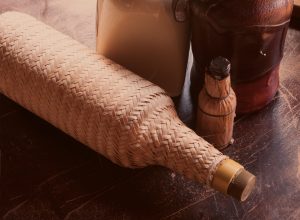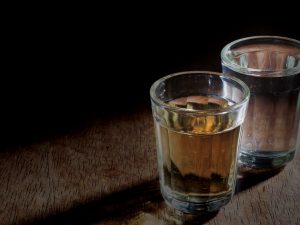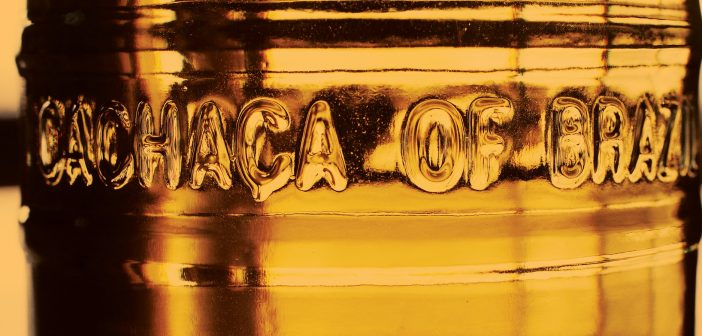Cachaça is an alcoholic Brazilian spirit distilled from fermented sugarcane juice. It is perhaps best known as the principal ingredient used in a caipirinha, the much-celebrated Brazilian cocktail
Cachaça is often mistaken for rum as both are derived from sugarcane processing. Cachaça, however, is subject to a more genuine refining process and is distilled from the actual sugarcane juice (rum is made from molasses, a by-product). This distinction gives cachaça its unique grassy flavour and robust aroma.
Like rum, there are two varieties of cachaça: unaged – branca (white) or prata (silver) – and aged – amarela (yellow) or ouro (gold). Most unaged cachaças are bottled straight from the distillation process and tend to be those typically used in caipirinhas.
Like rum, there are two varieties of cachaça: unaged – branca (white) or prata (silver) – and aged – amarela (yellow) or ouro (gold). Most unaged cachaças are bottled straight from the distillation process and tend to be those typically used to mix caipirinhas.
Yellow/gold cachaças, by contrast, are darker in hue and offer a far more complex taste. They are aged in wooden barrels – there are over two dozen types of woods commonly used, including amburana, jequitibá and tapinhoã. Such cachaça is seldom used in cocktails and is best appreciated in neat form.
Cachaça has acquired an impressive collection of nicknames over the years – over 2000 in total! Some of the more common are água que passarinho não bebe (water that the birds don’t drink), café-branco (white coffee) and esquenta-corpo (body warmer), but perhaps the most ubiquitous synonym for cachaça is pinga, derived from the Portuguese verb pingar (to drip), which hints to the interesting story leading to its discovery.
The history of cachaça – a sweet discovery
 The origins of cachaça are not entirely clear and somewhat contested. Sugar has always been a big business in Brazil, ever since the Portuguese introduced sugarcane for harvest more than 500 years ago. The early settlers established huge plantations and discovered a number of by-products and residues from the sugarcane boiling process, one of which they called cagaça – a foamy sugarcane juice, which they set aside to nourish the livestock and the slaves.
The origins of cachaça are not entirely clear and somewhat contested. Sugar has always been a big business in Brazil, ever since the Portuguese introduced sugarcane for harvest more than 500 years ago. The early settlers established huge plantations and discovered a number of by-products and residues from the sugarcane boiling process, one of which they called cagaça – a foamy sugarcane juice, which they set aside to nourish the livestock and the slaves.
One particular farm in the State of Pernambuco, accordingly to local folklore, realised that this broth would naturally ferment if left long enough and, due to the heat, evaporate to form droplets on the ceiling. These droplets – now highly alcoholic in content – would subsequently “pingar” (“drip”) to the floor, much to the delight of the thirsty workers. Cachaça seemingly “fell from the heavens”.
Other accounts trace cachaça’s origins to a certain site in São Vincente from 1532, which claims to be Brazil’s first sugarcane plantation and distillery. Bragging rights are somewhat academic; it was a discovery of chance and one that would set in motion a story steeped in political and socioeconomic intrigue.
The politics of cachaça
It wasn’t long before early producers began bartering value of their new discovery, and cachaça was introduced to European and African markets. However, unwittingly, cachaça proved to be tough competition for Portugal’s own home-grown sauce, bagaceira (Pomace Brandy), which led the Portuguese government to enforce an excessive levy on cachaça in an attempt to slow production and cull demand.
This unjust taxation triggered the Revolta da Cachaça, in 1660, whereby a group of prominent cachaça producers stormed the Presidential Palace in Rio de Janeiro and forced the governor into hiding. It set a precedent for public protest and demonstration in Brazil.
Where does cachaça come from?
According to ABRAB, Associação Brasileira de Bebidas, the State of São Paulo accounts for approximately 46% of Brazil’s cachaça production, way ahead of Pernambuco and Ceará that represent 12% respectively. São Paulo’s dominance is entirely thanks to the volume of industrial production, and in fact other states – such as Minas Gerais – have achieved a far more enviable reputation amongst cachaça aficionados based on their artisanal production.
Legend has it that many cachaças brancas were transported to Minas Gerais in huge wooden barrels during the seventieth-century gold rush, which subsequently transformed their taste and appearance, taking on a more amber complexion and aged taste. To this day Minas Gerais – with towns that have prospered as a result of cachaça production, such as Salinas – remains the gold star for quality, aged cachaça. This appetite for craft production means that Minas Gerais alone has over 1,500 registered brands of cachaça; São Paulo has less than 700, despite its distilling might. Cachaça tourism continues to grow, and organised trips akin to the vineyard tours of South Africa or Australia are increasingly common.
Cachaça overseas
 Cachaça has gained popularity and notoriety overseas thanks to the cultural export that is the “Caipirinha”. However, it has not all been plain sailing, especially in the USA, where any spirit derived from sugarcane is traditionally labelled as a rum – in cachaça’s case, ‘Brazilian Rum’. There was a sustained period of debate about separating cachaça into its own class, like tequila, or an ‘appellation’ within a broader class, like cognac and champagne. Finally, in 2012, after nearly 40 years of lobbying, the US government agreed to recognise the spirit as a genuine Brazilian product, which means it must be labelled and sold accordingly. In turn, Brazil pledged to recognise American bourbon and Tennessee whisky.
Cachaça has gained popularity and notoriety overseas thanks to the cultural export that is the “Caipirinha”. However, it has not all been plain sailing, especially in the USA, where any spirit derived from sugarcane is traditionally labelled as a rum – in cachaça’s case, ‘Brazilian Rum’. There was a sustained period of debate about separating cachaça into its own class, like tequila, or an ‘appellation’ within a broader class, like cognac and champagne. Finally, in 2012, after nearly 40 years of lobbying, the US government agreed to recognise the spirit as a genuine Brazilian product, which means it must be labelled and sold accordingly. In turn, Brazil pledged to recognise American bourbon and Tennessee whisky.
This is good news for a number of household brands as they assess their commercial potential overseas, which by all accounts is bountiful – alarmingly, the majority of all cachaça produced – almost 99% – is consumed in Brazil. Perhaps it’s time to champion cachaça in London!
By-Por Ed Freeman
















